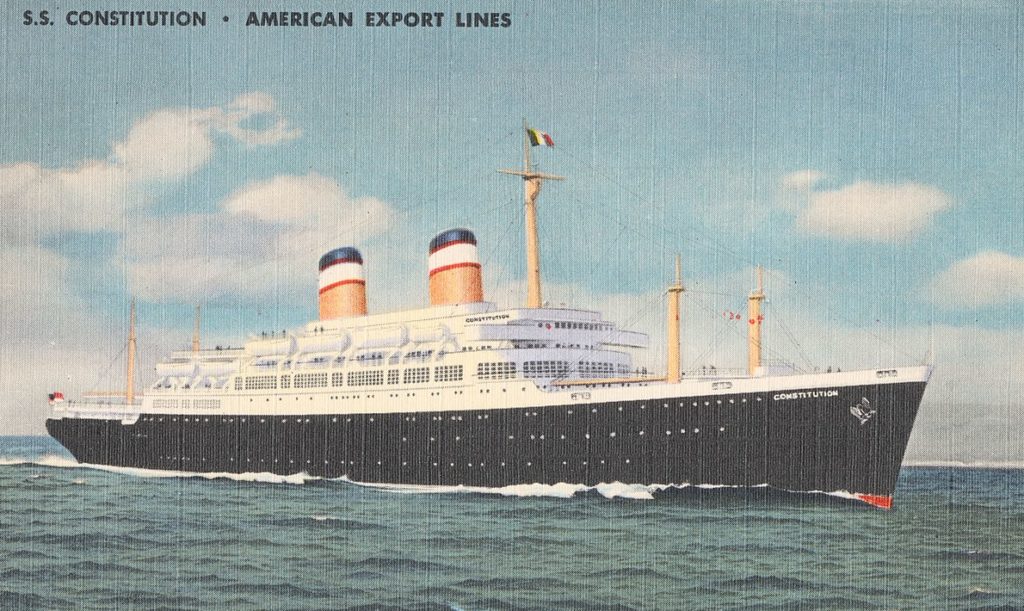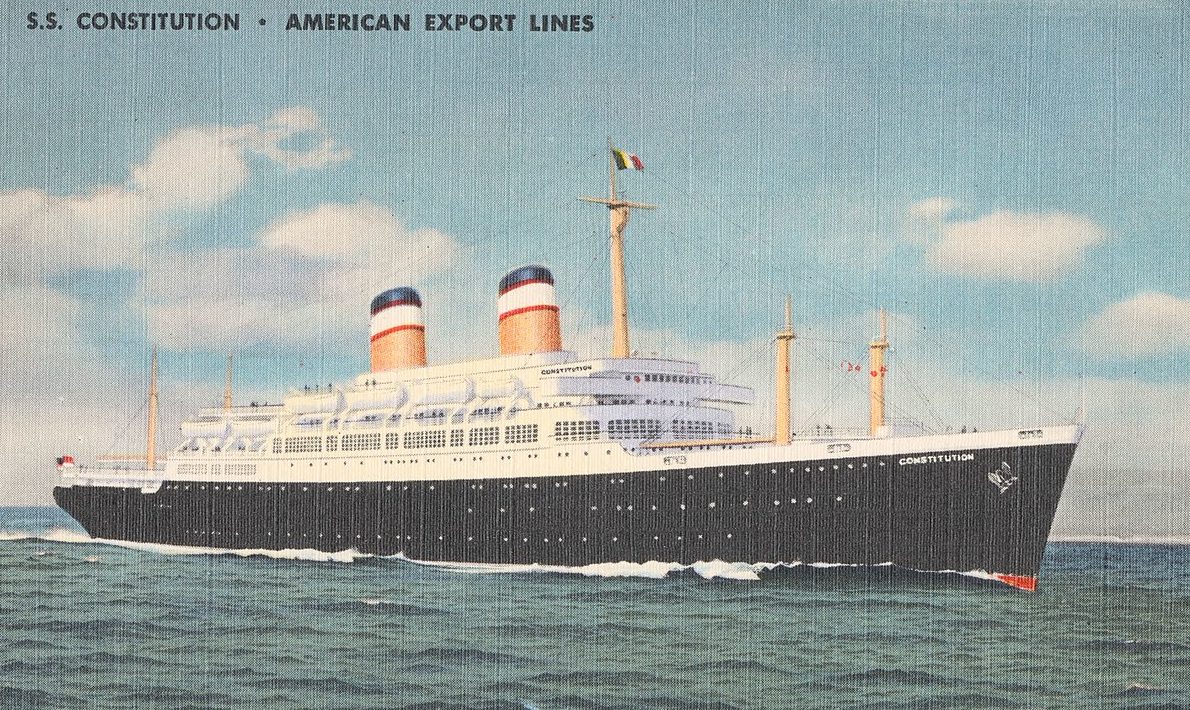USS Constitution is not the only ship named for the United States’ landmark document. During the 1800s, there were at least three passenger ships named Constitution that conducted service between Europe and the United States. Another ship, also named Constitution, was built after World War II. This inevitably leads to some confusion when linking names to Constitution. At the USS Constitution Museum, we often learn of family stories passed down through generations claiming that ancestors arrived in United States on board “Old Ironsides.” In fact, with the exception of some crew members who signed on with the U.S. Navy in foreign countries and were discharged upon arrival in the United States, USS Constitution did not transport immigrants and rarely carried passengers of any kind.
Here is a list of the “other” Constitutions:
Brig and Barque Constitution: From Bremen, Germany
The brig Constitution was built in Bremen, Germany, and launched in October 1820. The two-masted ship sailed regularly scheduled runs between Bremen and New York throughout the 1820s and into the 1830s. When the ship wrecked in 1833, its owners replaced it with a three-masted barque of the same name. The barque Constitution was launched in Bremen in November 1833 and sailed the same route for the next 25 years before being sold in Bangkok in 1859. Both ships made stops in Liverpool and brought passengers from Germany and England to the United States.
Ship Constitution: From Liverpool, England
At least one other British ship named Constitution also sailed regularly from Liverpool in the 1840s and 1850s, often carrying more than 300 passengers. U.S. immigration records indicate a ship named Constitution continued to make the same passage into the late 1860s, but it’s unclear if that ship was a fourth Constitution or the same British ship.
Immigrants from Ireland
All of the Constitutions sailing from Germany and England in the mid-1800s brought immigrants from Europe, with many hailing from Ireland. More than a million refugees emigrated from Ireland in the decade after 1845, when the potato crop collapse led to widespread famine.
Ship Constitution: Headed to Australia
Yet another ship named Constitution sailed the two-month voyage from England to Australia in 1851. There were 100 passengers on board, 84 of whom were traveling in steerage, the cramped dark deck above the hold where passengers lived in shared spaces. Traveling in steerage was the cheapest passage for impoverished refugees and emigrants, but the conditions were often unhealthy. More affluent individuals and families made the passage in six well-ventilated cabins on an upper deck. An “intermediate” class housed four additional families. During the voyage, four passengers died while traveling in steerage: two adults, one child, and an infant born on the voyage. A second infant born on the voyage survived.
SS Constitution: The Luxury Route from Italy
After World War II, another shipping company built much closer to USS Constitution’s home port capitalized on the famous ship name for a transatlantic steam liner. The SS (Steam Ship) Constitution launched from the Bethlehem Steel shipyard in Quincy, Massachusetts, in September 1950. Built by American Export Lines, which operated freighters, Constitution and its sister ship, SS Independence, carried 1,000 passengers on regular service between New York and Naples, Italy, with a stop in southern France. This journey was marketed as the “Sunlane” route. Images of USS Constitution were built into the interior décor of SS Constitution, and the company leveraged the ship’s famous name and its patriotic connotations in their early marketing. Unlike the earlier Constitutions, most accommodations were quite luxurious. SS Constitution served as a means of travel for American tourists visiting Europe in the post-war years, but also carried Europeans back to New York.
Though not as famous as its Navy namesake, SS Constitution gained fame after appearing in two episodes of I Love Lucy, in which Lucy and Ricky Ricardo make the passage. The ship was a favorite of Grace Kelly, who travelled on it regularly after becoming Princess Grace of Monaco. The ship was also the setting for the romantic film drama An Affair to Remember in 1957.
As transatlantic jet travel replaced steamship passenger liners in the 1960s, business declined and SS Constitution was sold to a Taiwanese company that continued to operate cruises in Hawaii on the ship throughout the 1980s. In 1997, after falling in disrepair at a dock in Hawaii, the ship sank north of the islands while being towed to a scrapyard.

Finding Passenger Lists
Historic lists of passenger arrivals in the United States are maintained by the National Archives and Records Administration. The records are available on microfilm, but not all reels have been digitized. Several private firms have transcribed and indexed these records, the largest of which is Ancestry.com, which has indexed New York arrivals by ship name from 1820 to 1957. If you have an ancestor who arrived on a ship named Constitution, you can research the records at the National Archives or via Ancestry.com. Access to Ancestry.com is provided at the public facilities of the National Archives and at many local public libraries.
The Author(s)
Carl Herzog
Public Historian, USS Constitution Museum
Carl Herzog is the Public Historian at the USS Constitution Museum.
